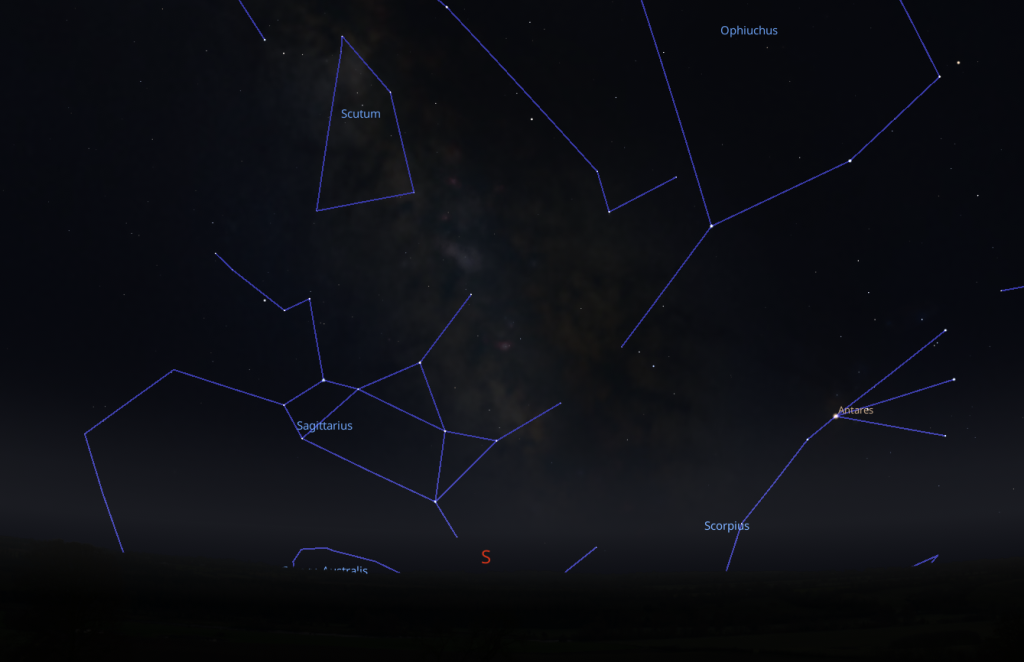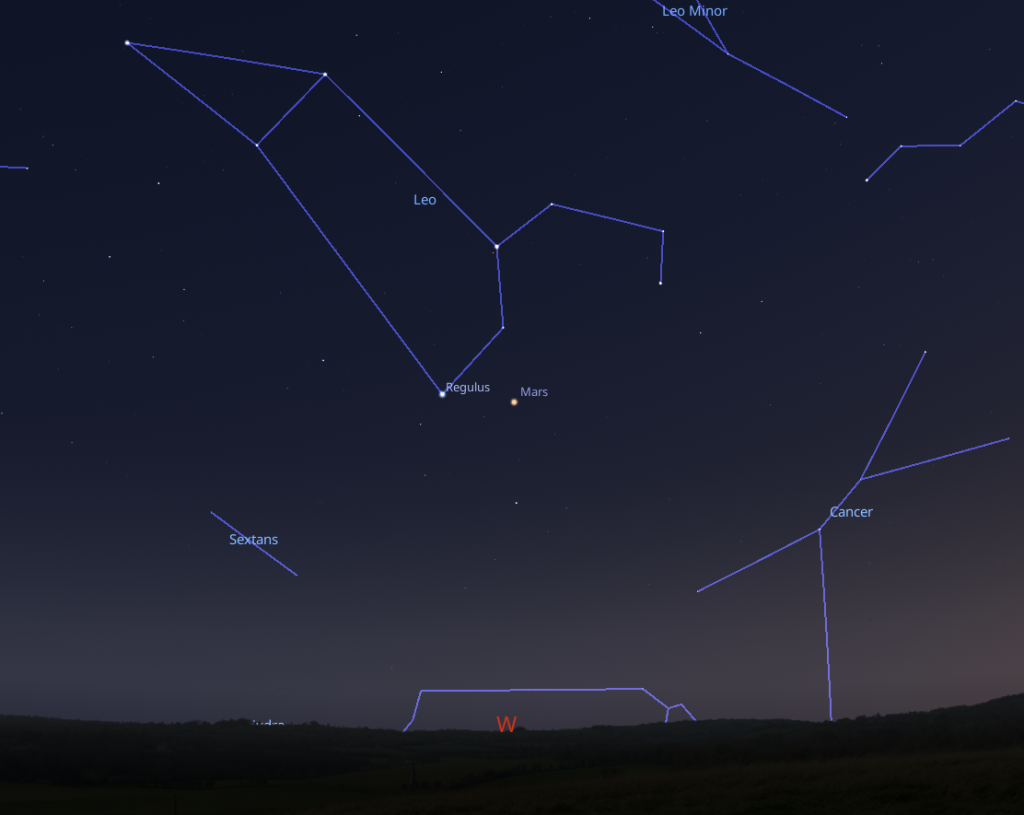June can be a difficult time for stargazing. The long summer days, with the Sun setting just before 10 PM and sunrise at 5 AM, mean we have very short periods of night. In fact, in June we observe astronomical twilight all night long here in Ireland. Due to the time of year, Earth’s tilt and Ireland’s location so far North, the Sun will not set far enough below the horizon to reach complete darkness. This can make stargazing a little more difficult for anyone wishing to see some of the fainter objects in our skies. However, there will still be numerous bright objects and phenomena to observe, so keep reading to learn more about our June night skies from Ireland.
Noctilucent clouds
Keep an eye out for noctilucent clouds; thin, wispy clouds that glow silvery blue at nighttime. They are made up of tiny ice crystals and can be seen during the summer when we experience astronomical twilight. These are the highest clouds in our atmosphere and during this period of twilight, the Sun will illuminate these clouds from below, causing them to shimmer. For countries near Ireland’s latitude and more northerly, we see these regularly in the summer months. Recently, these clouds have been spotted at lower latitudes than expected which may be due to climate change, or rocket launches expelling matter into the atmosphere, which then form more noctilucent clouds.
The Milky Way
The Milky Way, our home galaxy, will begin to make a spectacular appearance in the night sky in June. To the naked eye, it looks like a hazy, milky band stretching across the sky, but through binoculars or a telescope it reveals countless stars, clusters, and dark dust lanes. In Irish we call this Bealach na Bó Finne, which roughly means the way of the white cow, a fitting and similar name to it’s English counterpart. The best time to view it this month is from midnight to about 3 AM, with ideal conditions around the new moon on June 25th. Look south, where the bright core of the galaxy rises in the constellations Scorpius and Sagittarius—Scorpius is marked by the red star Antares, and Sagittarius hosts the galactic center. For the clearest views, avoid artificial lights and let your eyes adjust to the dark for at least 20 minutes.

Looking south at 1.30 AM on June 25th. Image credit: Stellarium.
The Planets
This month Mars will be one of the first objects to appear in the sky as the Sun sets. Look to the west to find it in the constellation of Leo, near the bright star Regulus. Mars will set just after 1 AM at the beginning of June, and by midnight towards the end of the month, so catch this red planet while you can before it leaves our night sky. On June 29th, you will find Mars to the upper left of the Moon.

Looking west towards Mars at 11.30 PM on June 10th. Image Credit: Stellarium.
Venus and Saturn are both visible in the morning sky, appearing just after 3 AM in the east. Venus is the brightest object in the night sky other than the Moon, so it should be easy to find them as Venus trails Saturn across the sky. They are both quite close to the Sun however and will disappear from view as the Sun begins to rise around 5 AM.
Summer triangle
Look to the east after sunset to find the Summer Triangle. This is an asterism, shaped like a triangle of course, that is made up of some of the brightest stars in the sky. Deneb, Vega and Altair, the three stars that make up the summer triangle, are all in separate constellations. Deneb can be found in Cygnus, marking the tail of the swan, and is a blue-white supergiant. Vega is the 5th brightest star in the night sky and is like our own sun, located in the constellation Lyra. Finally, Altair forms the head of Aquila, the eagle constellation. Altair is a young main sequence star and is one of the closest stars visible to the naked eye at only 16.7 lightyears away from us. The Summer Triangle is not a constellation itself, but it serves as a great celestial landmark to help stargazers find their way around the summer night sky. Constellations divide up the whole sky into segments, whereas asterisms are prominent star patterns and may be just part of a constellation, like the Big Dipper asterism in Ursa Major, or made up of bright stars from multiple constellations, as in this case.
Summer solstice
June also contains the longest day of the year, the summer solstice, which will take place on June 21st. Take the opportunity to soak in the long evening light before our days begin to shorten once more.
Wishing you starry skies!
Blog post written by Jane Dooley


